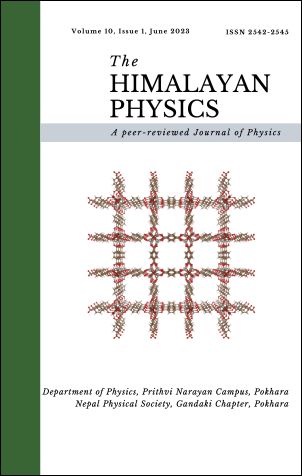Controlling pests in post-harvested wheat using microwave heating
DOI:
https://doi.org/10.3126/hp.v10i1.55284Abstract
Microwaves refer to electromagnetic waves ranging from 300 MHz to 300 GHz in frequencies. Microwave de-infestation works well without degrading the host material’s quality. In this research, four different samples of wheat grains are taken from each location, which are injected by 20 pests of the same type per sample. Each sample is then put into the microwave oven for the exposure time of 1 minute and 30 seconds, heated at temperatures 60◦C, 70◦C, 80◦C, 90◦C, and 100◦C. Finally, the samples are germinated, followed by the analysis of nutrition levels at the laboratory. The statistical analysis of the data shows a significant difference in mortality and germination with temperature changes. The average mortality rate was 95% at 100◦C for 1 min of exposure time, exposing mortality increases with temperature. The germination decreased with the temperature increment and the exposure time magnitude. Statistical analysis reveals that there is no significant difference in the nutrition levels of wheat with the temperature change. The study concludes that microwave heating is one of the effective tools for controlling pests in post-harvested grains without using pesticides.
Downloads
Downloads
Published
How to Cite
Issue
Section
License
This license enables reusers to distribute, remix, adapt, and build upon the material in any medium or format for noncommercial purposes only, and only so long as attribution is given to the creator. If you remix, adapt, or build upon the material, you must license the modified material under identical terms.




